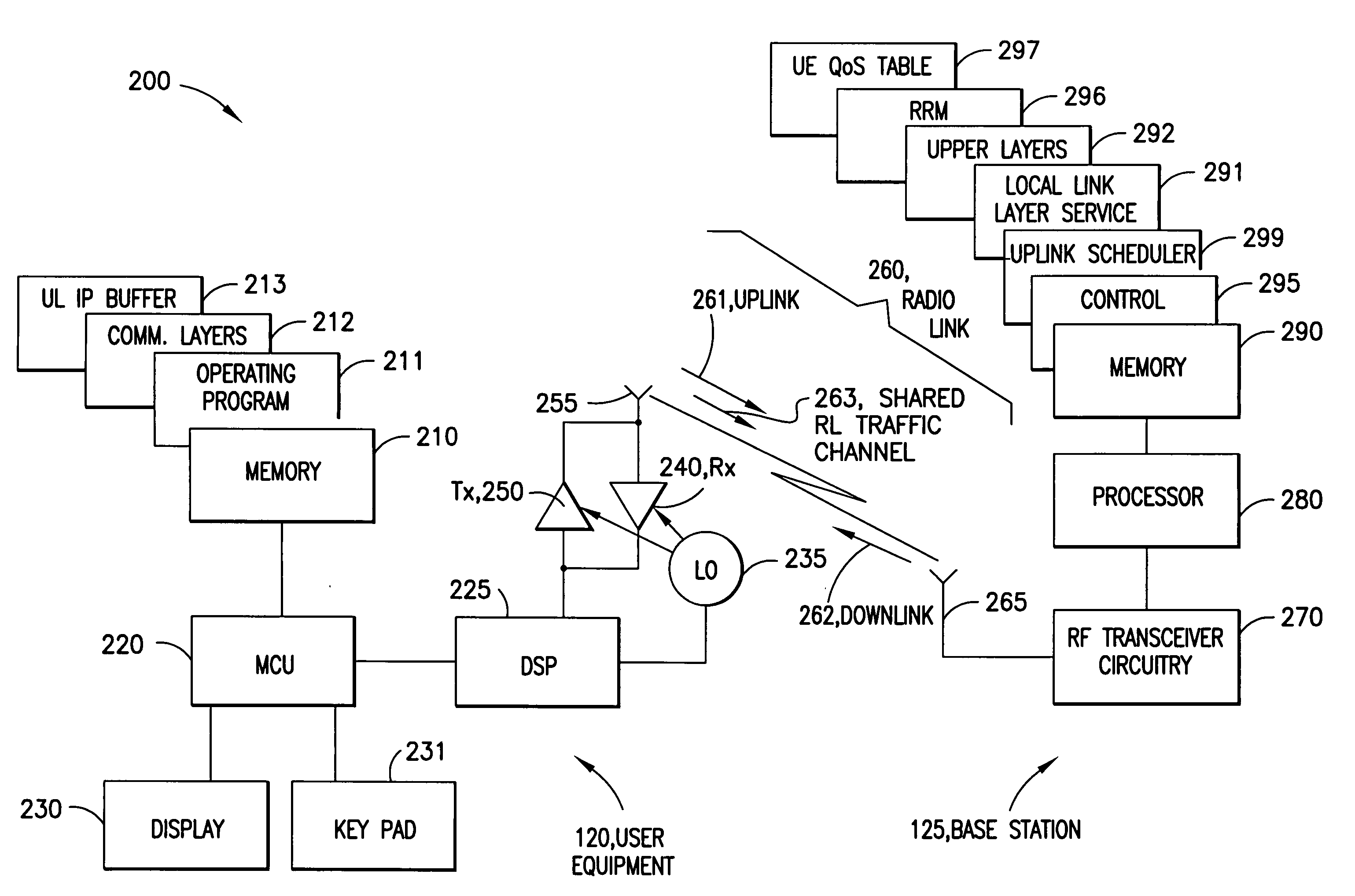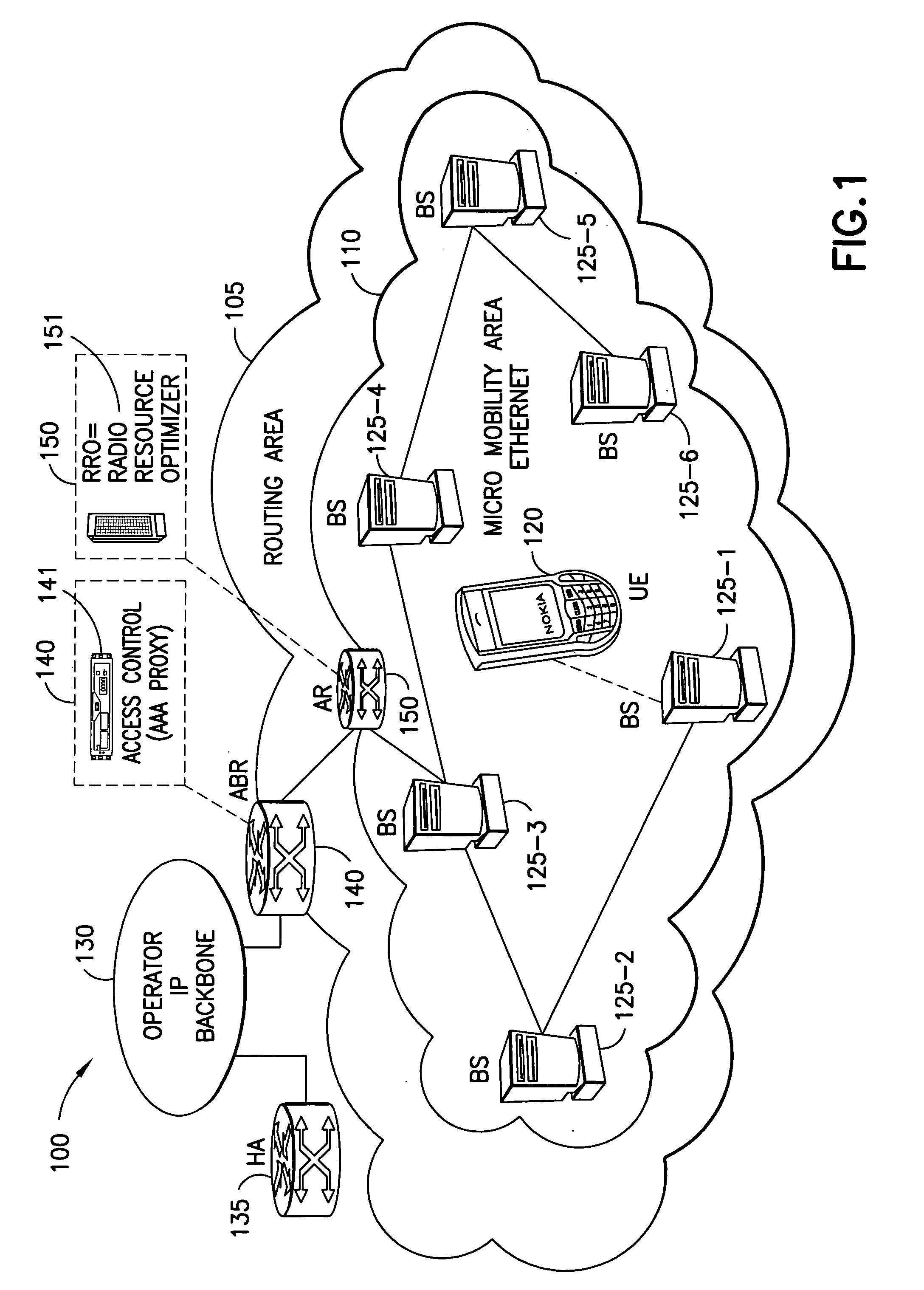Techniques for radio link resource management in wireless networks carrying packet traffic
a radio link and resource management technology, applied in the field of wireless systems, can solve the problems of increasing the complexity of the network at system level, wasting overall network resources, and increasing the perceived latency of packet-based services
- Summary
- Abstract
- Description
- Claims
- Application Information
AI Technical Summary
Benefits of technology
Problems solved by technology
Method used
Image
Examples
Embodiment Construction
[0018] As explained above, the use of radio bearers to provide packet-based services can be inefficient, increasing perceived latency and complexity of the wireless network. Thus in radio access networks carrying packet traffic, dynamic sharing of radio link resources between multiple users should be optimized as far as possible so that all traffic capacity is used more efficiently and latencies due to heavy signalling can be reduced.
[0019] In the context of wireless networks such as the planned, packet-optimized long-term evolution of 3G radio access networks, it would be better to define improved means for radio resource control, thereby enabling more efficient dynamic sharing of radio resources between multiple users at the same time reducing latencies due to heavy signalling. As most of the quality of service information is relevant only to the transmitting entity, radio bearers with end-to-end setup signalling prior to the connection can be replaced in between the user equipme...
PUM
 Login to View More
Login to View More Abstract
Description
Claims
Application Information
 Login to View More
Login to View More - R&D
- Intellectual Property
- Life Sciences
- Materials
- Tech Scout
- Unparalleled Data Quality
- Higher Quality Content
- 60% Fewer Hallucinations
Browse by: Latest US Patents, China's latest patents, Technical Efficacy Thesaurus, Application Domain, Technology Topic, Popular Technical Reports.
© 2025 PatSnap. All rights reserved.Legal|Privacy policy|Modern Slavery Act Transparency Statement|Sitemap|About US| Contact US: help@patsnap.com



